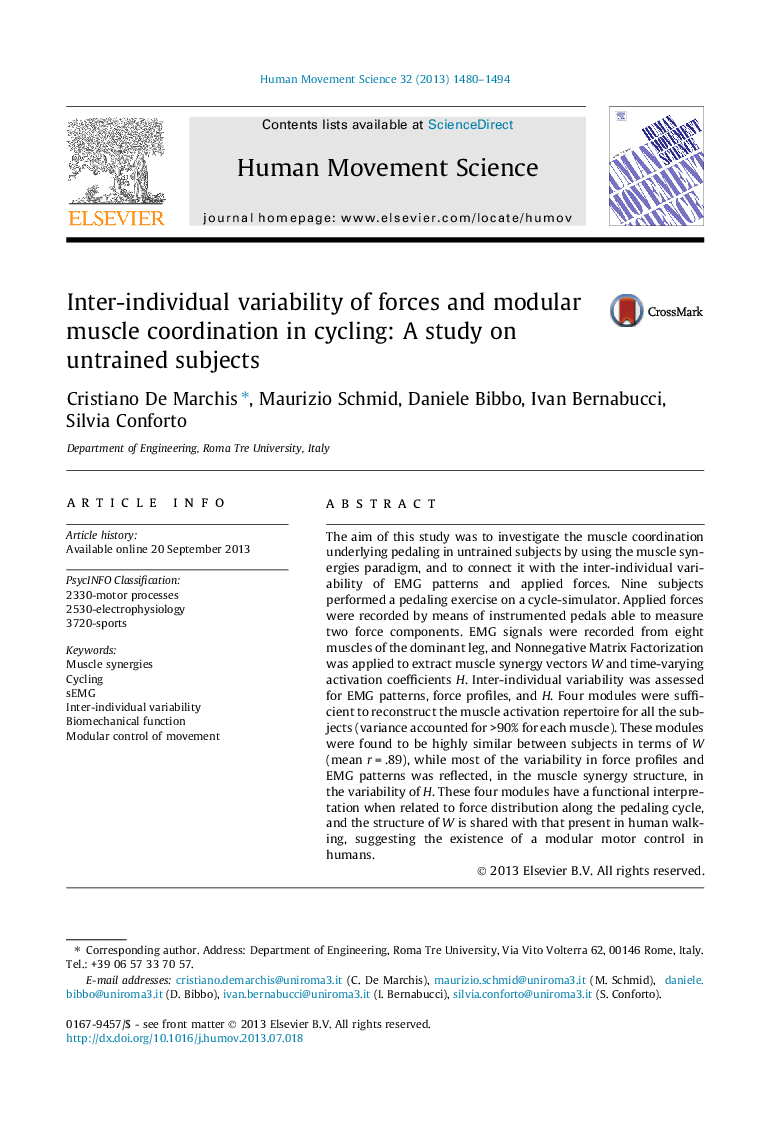| Article ID | Journal | Published Year | Pages | File Type |
|---|---|---|---|---|
| 10459159 | Human Movement Science | 2013 | 15 Pages |
Abstract
The aim of this study was to investigate the muscle coordination underlying pedaling in untrained subjects by using the muscle synergies paradigm, and to connect it with the inter-individual variability of EMG patterns and applied forces. Nine subjects performed a pedaling exercise on a cycle-simulator. Applied forces were recorded by means of instrumented pedals able to measure two force components. EMG signals were recorded from eight muscles of the dominant leg, and Nonnegative Matrix Factorization was applied to extract muscle synergy vectors W and time-varying activation coefficients H. Inter-individual variability was assessed for EMG patterns, force profiles, and H. Four modules were sufficient to reconstruct the muscle activation repertoire for all the subjects (variance accounted for >90% for each muscle). These modules were found to be highly similar between subjects in terms of W (mean r = .89), while most of the variability in force profiles and EMG patterns was reflected, in the muscle synergy structure, in the variability of H. These four modules have a functional interpretation when related to force distribution along the pedaling cycle, and the structure of W is shared with that present in human walking, suggesting the existence of a modular motor control in humans.
Related Topics
Life Sciences
Neuroscience
Cognitive Neuroscience
Authors
Cristiano De Marchis, Maurizio Schmid, Daniele Bibbo, Ivan Bernabucci, Silvia Conforto,
